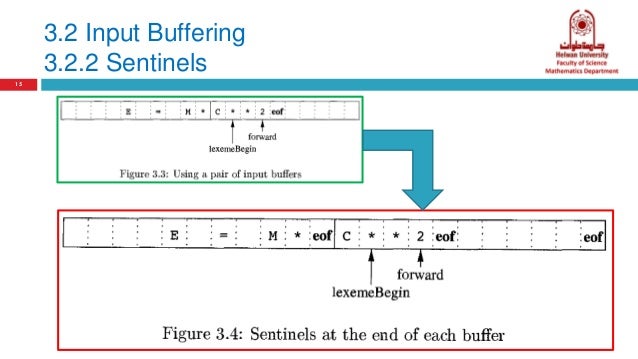

If (! PyArg_ParseTupleAndKeywords(args, kwds, "|i", kwlist, &length)) PyMyArray_init(PyMyArray *self, PyObject *args, PyObject *kwds) * This is the _init_ function, implemented in C */ * This is where we define the PyMyArray object structure */ If you try to run this notebook under older Python versions, things will probably not go very well for you. I should emphasize here that I'll using the syntax of Python 3.3+ it's possible to modify this to be compatible with older Python versions, but that requires some judicious use of C compiler directives (see the NumPy buffer module for an excellent example of this cross-version approach).

If you get through these tutorials, the following links serve as a really handy reference on the Buffer Protocol itself: This goes through the basics of creating a type (a class) using C, which can then be visible in Python.
#What is input buffering in compiler design how to
Below I'll give you an example of how to do this.īefore you go on, you should know that this topic is fairly advanced as far as Python tutorials go, and requires more background knowledge than the average Python hacker probably has. (For example, you may be interested in taking data structures from another language, such as Julia, and exposing them to Python in a flexible manner). Your first course might be to use something like f2py, cython, or SWIG to do this: I'd definitely recommend these tools for most problems of this nature.īut you may, for various reasons, want to go even deeper and implement the buffer protocol directly. Imagine, for instance, that you have a C object that you'd like to wrap and make available to Python. This is the power of Python in a nutshell: it abstracts away C-level messiness like this and instead gives us the nice, powerful, and clean Python interface we all know and love.īut sometimes you need to get your hands dirty.
#What is input buffering in compiler design code
For example, the code that enables the above numpy example is found in NumPy's buffer.c file, and reading through it is not particularly enlightening. Because the buffer protocol is fundamentally a C-API entity, implementing new functionality with it generally requires digging into the guts of Python's C API. This cannot be emphasized enough: it is fundamentally the Buffer Protocol and related NumPy functionality that make Python useful as a scientific computing platform.įortunately, most scientists can simply use the buffer protocol via tools like NumPy without knowing too much of the details of what's behind it. With apologies to the PyPy project's extremely active community, I should also mention that this is one of the main reasons that scientists don't really pay much attention to it: until PyPy can easily interface to all the C and Fortran code we use on a daily basis, all its JIT-ed performance gain is of very little use to us. The buffer protocol is extremely useful for what scientists do with Python: build intuitive interfaces to compiled legacy code. This is one big reason that NumPy and its predecessors were initially developed, and it's why the buffer protocol was later proposed and added to Python's standard library. The ability for Python to natively share data with these compiled libraries is incredibly important for scientific computing. Well, in scientific computing, most of the interesting algorithms are implemented in compiled code: for example, scipy is essentially a set of wrappers around NetLib utilities, which are well-tested implementations of scientific algorithms written mostly in Fortran and C.

At first glance, this might seem rather trivial.


 0 kommentar(er)
0 kommentar(er)
